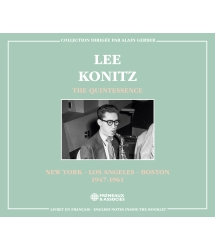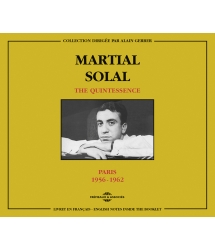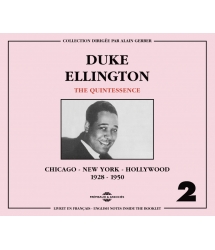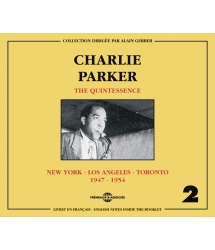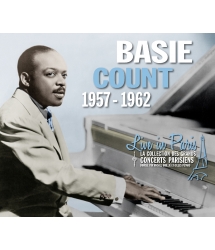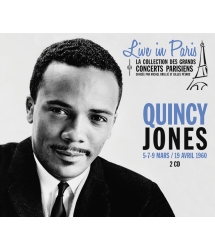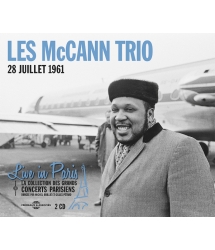- Notre Catalogue
- Philosophie
- Philosophes du XXème siècle et d'aujourd'hui
- Histoire de la philosophie (PUF)
- Contre-Histoire et Brève encyclopédie par Michel Onfray
- L'œuvre philosophique expliquée par Luc Ferry
- La pensée antique
- Les penseurs d'hier vus par les philosophes d'aujourd'hui
- Textes philosophiques historiques interprétés par de grands comédiens
- Histoire
- Livres
- Sciences Humaines
- Paroles historiques
- Livres audio & Littérature
- Notre Catalogue
- Jazz
- Blues - R'n'B - Soul - Gospel
- Rock - Country - Cajun
- Chanson française
- Musiques du monde
- Afrique
- France
- Québec / Canada
- Hawaï
- Antilles
- Caraïbes
- Cuba & Afro-cubain
- Mexique
- Amérique du Sud
- Tango
- Brésil
- Tzigane / Gypsy
- Fado / Portugal
- Flamenco / Espagne
- Yiddish / Israël
- Chine
- Tibet / Népal
- Asie
- Océan indien / Madagascar
- Japon
- Indonésie
- Océanie
- Inde
- Bangladesh
- URSS / Chants communistes
- Musiques du monde / Divers
- Musique classique
- Compositeurs - Musiques de film - B.O.
- Sons de la nature
- Notre Catalogue
- Jeunesse
- Philosophie
- Nouveautés
- Comment commander ?
- Recevoir le catalogue
- Manifeste
- Dictionnaire











- Notre Catalogue
- Philosophie
- Philosophes du XXème siècle et d'aujourd'hui
- Histoire de la philosophie (PUF)
- Contre-Histoire et Brève encyclopédie par Michel Onfray
- L'œuvre philosophique expliquée par Luc Ferry
- La pensée antique
- Les penseurs d'hier vus par les philosophes d'aujourd'hui
- Textes philosophiques historiques interprétés par de grands comédiens
- Histoire
- Livres
- Sciences Humaines
- Paroles historiques
- Livres audio & Littérature
- Notre Catalogue
- Jazz
- Blues - R'n'B - Soul - Gospel
- Rock - Country - Cajun
- Chanson française
- Musiques du monde
- Afrique
- France
- Québec / Canada
- Hawaï
- Antilles
- Caraïbes
- Cuba & Afro-cubain
- Mexique
- Amérique du Sud
- Tango
- Brésil
- Tzigane / Gypsy
- Fado / Portugal
- Flamenco / Espagne
- Yiddish / Israël
- Chine
- Tibet / Népal
- Asie
- Océan indien / Madagascar
- Japon
- Indonésie
- Océanie
- Inde
- Bangladesh
- URSS / Chants communistes
- Musiques du monde / Divers
- Musique classique
- Compositeurs - Musiques de film - B.O.
- Sons de la nature
- Notre Catalogue
- Jeunesse
- Philosophie
- Nouveautés
- Comment commander ?
- Recevoir le catalogue
- Manifeste
- Dictionnaire
14 FÉVRIER 1959
HORACE SILVER
Ref.: FA5641
EAN : 3561302564128
Label : Frémeaux & Associés
Durée totale de l'œuvre : 1 heures 8 minutes
Nbre. CD : 1
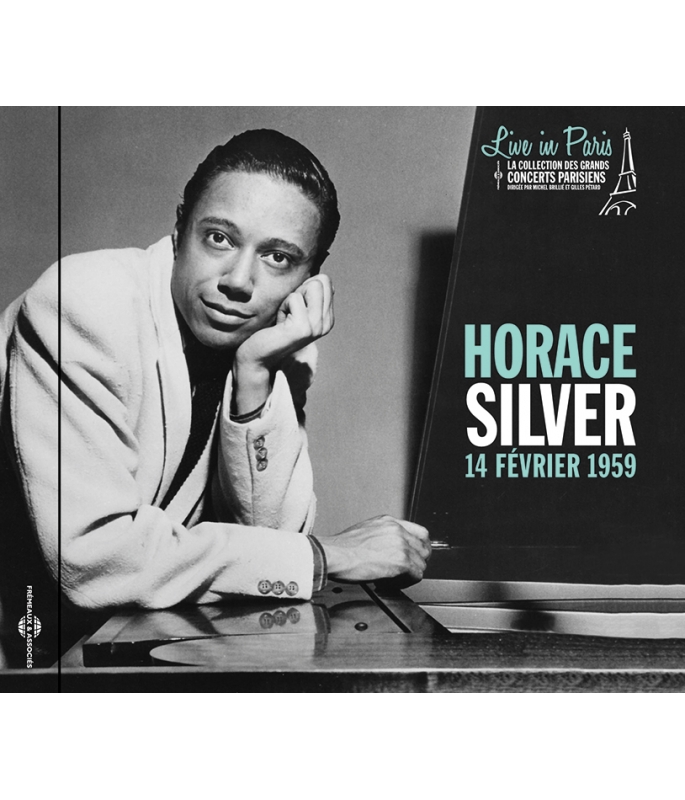
14 FÉVRIER 1959
Horace Silver was the co-founder of the Jazz Messengers (with Art Blakey), and he was a pianist who left an indelible mark on the history of jazz. An unavoidable figurehead in the ‘hard bop’ and ‘soul jazz’ movements (which he helped to initiate), at the turn of the Sixties he was one of the major artists to record for Blue Note. This album of his first concert in Paris – issued here for the very first time on CD — includes a tasty version of his hit Señor Blues, the cornerstone of the funky soul jazz to come.
Patrick FRÉMEAUX
The Live in Paris collection by Michel Brillié allows listeners to hear previously-unreleased recordings (made at concerts and private- or radio-sessions) by the great 20th stars in jazz, rock & roll and song. These “live” takes, and the artists’ rapport with their audiences, gives these performances an additional soul and sensibility in counterpoint to the rigorous demands of studio recordings. Particular care was taken when restoring the sound of these tapes in order to meet CD standards while preserving the original colours of the period. Patrick FRÉMEAUX & Gilles PÉTARD
HORACE SILVER PIANO • JUNIOR COOK TENOR SAX • BLUE MITCHELL TRUMPET • GENE TAYLOR BASS • LOUIS HAYES DRUMS
DIRECTION ARTISTIQUE : GILLES PÉTARD ET MICHEL BRILLIÉ
DROITS : BODY & SOUL LICENCIE A FREMEAUX & ASSOCIES.
HORACE SILVER INTRODUCTION (HORACE SILVER) • THE PREACHER (HORACE SILVER) • ROOM 608 (HORACE SILVER) • DOODLIN’ (HORACE SILVER) • SWEET STUFF (HORACE SILVER) • SEÑOR BLUES (HORACE SILVER).
-
PisteTitreArtiste principalAuteurDuréeEnregistré en
-
1Horace Silver IntroductionHorace Silver - Junior Cook - Blue Mitchell - Gene Taylor - Louis HaynesHorace Silver00:01:331959
-
2The PreacherHorace Silver - Junior Cook - Blue Mitchell - Gene Taylor - Louis Haynes00:11:551959
-
3Room 608Horace Silver - Junior Cook - Blue Mitchell - Gene Taylor - Louis Haynes00:15:081959
-
4Doodlin'Horace Silver - Junior Cook - Blue Mitchell - Gene Taylor - Louis Haynes00:18:181959
-
5Sweet StuffHorace Silver - Junior Cook - Blue Mitchell - Gene Taylor - Louis Haynes00:08:301959
-
6Senor BluesHorace Silver - Junior Cook - Blue Mitchell - Gene Taylor - Louis Haynes00:13:181959
Horace Silver Live in Paris FA5641
HORACE
SILVER
14 FÉVRIER 1959
Live in Paris
La collection des grands concerts parisiens
Dirigée par Michel Brillié et Gilles Pétard
Le Lord du Funk
« Funky, comment ça funky ? Tu prends un bain tous les jours ! » C’est le père d’Horace Silver qui réagit à un article de Downbeat, le magazine de jazz américain, qui vient de titrer son article sur le pianiste avec cet adjectif.1 Pour le pianiste/compositeur, qui rapporte cette anecdote dans son autobiographie2, cette réplique est assez amusante, compte tenu du style de vie du musicien. Elevé dans un cadre familial plutôt strict – son père est originaire des îles du Cap Vert – il aura toute sa vie une conduite rigoureuse : pas d’alcool, pas de drogues, pas de tabac, une nourriture équilibrée et vitaminée. A 20 ans, ses voisins l’appellent « Nature Boy », le tube de Nat King Cole du moment. Une vie quasi monacale, si l’on exclut la partie sentimentale, plus dense. Même si, comme il l’écrit, Horace Silver n’a eu qu’une seule vraie femme dans son existence : « Lady Music ».
Funk…ou Soul ? Pour en revenir à la qualification de cette variation hard bop du début des sixties, les spécialistes se grattent la tête. Dans le numéro d’avril 1961 de Jazz Magazine, Michel-Claude Jalard essaye de synthétiser : « Le soul semble procéder tout naturellement de ce que, ces dernières années, l’on a appelé le funky. Les jazzmen ont tendance à substituer le terme « soul » au terme « funky » adjectif extrêmement trivial suggérant une idée de puanteur. »
Donc, en ce mois de février 1959, on en est bien encore au… funk. Alors, soul, funk : à Horace le dernier mot, rapporté dans Jazz Hot du même mois : « Tout ce qu’il faut à un musicien c’est du soul (traduisez du funk). C’est la seule chose qui compte. Et en tant que bonhomme, tout ce que je lui demande, c’est d’être bien lavé… » Hygiène du corps et de l’âme, le prêcheur tient bien en main ses ouailles.
Ce 14 février 1959, c’est la Saint Valentin… Fidel Castro va devenir premier ministre de Cuba, le premier circuit intégré est créé par Texas Instruments, et Elvis Presley, trouffion pour l’Oncle Sam en Allemagne, se prépare à passer sa prochaine permission à Paris, avec visite des girls du Lido…
Horace Silver et ses musiciens débarquent ce samedi 14 sous une douce météo parisienne. C’est sa première tournée européenne, dotée d’un planning pas trop lourd : le 14 à Paris, le 23 à Marseille, le 24 à Lyon, avec une escapade le 20 à San Remo, en Italie. Pendant son passage dans la capitale française, le quintet va jouer pour quelques dizaines de privilégiés serrés comme des harengs au célébrissime Club Saint Germain, rue Saint Benoit.
Le pianiste est par nature un être discret et réservé. Pourtant il aurait de quoi se pousser du col : il est déjà apprécié du public français – Pour ceux qui aiment le jazz, l’émission vedette d’Europe N°1 de Frank Ténot et Daniel Filipacchi le suit depuis plusieurs années : « Dès qu’un musicien intéressant arrivait, comme Horace Silver, il était matraqué à l’antenne », confirme Daniel à Jean-Louis Ginibre3. En 59, Silver a déjà joué avec la crème du jazz : Cannonball Adderley, Art Blakey, Miles Davis, Stan Getz, Coleman Hawkins, Milt Jackson, Quincy Jones, Lester Young…
Juste avant de s’envoler pour la vieille Europe, Horace Silver a enregistré Finger Poppin’, son dernier album aux studios de Rudy Van Gelder dans le New Jersey, avec son tout nouveau quintet : Blue Mitchell (tp), Junior Cook (ts), Eugene Taylor (b), Louis Hayes (ds). Cette formation deviendra l’archétype des quintets du pianiste – celui qui aura la plus grande longévité aussi. « Sweet Stuff », le morceau qu’il interprète à l’Olympia pour la première fois en public, fait partie de ce nouvel opus.
Le reste de la setlist des deux concerts bien remplis – 18h et minuit – est sage : une majorité de thèmes connus. Horace Silver les interprète avec toute sa fougue, « chétif, mèche en suspens sur l’œil que l’on devinait extatique, gestes saccadés, pied effectuant une gigue folle autour du tabouret. Avec une sorte de rage démoniaque, il frappait des notes sèches, des phrases courtes que sa main gauche accompagnait puissamment. » (Jean Pierre Binchet, Jazz Magazine, N°87)
« Room 608 » fait référence au numéro de la chambre que Silver a occupé à l’Arlington Hotel de New York, au milieu des années 50, et où il l’a composé, en même temps que « Doodlin’ » et « The Preacher ». L’endroit était l’un des lieux favoris de Miles Davis, Duke Jordan ou Art Farmer. Miles adorait ‘Doodlin’’, se rappelle Horace : « la première fois que je l’ai joué à Basin Street, il m’a rejoint après le set et m’a dit : « mec, ce truc, « Doodlin’ », c’est tellement funky ! Si j’étais une fille, ca me donnerait envie de coucher avec toi4… C’est Miles qui m’a fait l’un des plus beaux compliments que j’ai jamais eu : au Birdland, il est venu me voir et m’a dit que j’étais un ‘pur-sang’. »
« The Preacher » est sans doute le thème « silverien » par excellence. L’amusant est qu’il a failli ne jamais voir le jour. A l’écoute des premières répétitions du titre, en 1955, les propriétaires des disques Blue Note, Alfred Lion et Frank Wolff, ont trouvé que ça ressemblait trop à du Dixieland, et qu’on devait le remplacer par une impro de blues. Il a fallu qu’Horace Silver et Art Blakey insistent lourdement pour que « The Preacher » soit enregistré…
« Senor Blues » date de fin 56, et est, avec « Song for My Father », le morceau les plus vendu de Silver. Les deux titres sont une référence au père de Silver, John Tavares Silva, qui l’a élevé seul avec une grande tante après la mort de la mère d’Horace, quand il avait 9 ans.
Silver adorait voyager : pendant la décennie on va le retrouver un peu partout sur le globe, au Japon (ce qui va inspirer « Tokyo Blues ») ou au Brésil, que son ami et pianiste Sergio Mendes lui a fait découvrir. C’est de retour de ce voyage effectué pendant la période du Carnaval, que « hanté par le rythme de la bossa-nova », le pianiste compose « Song for My Father » - de fait plus inspiré par les vieilles mélodies traditionnelles du Cap Vert que son père jouait à la maison. Silver revisite Paris en Octobre 1962, puis en fin 68 en Europe pour une tournée organisée par le gouvernement américain. Il ne réapparaît dans la capitale française qu’en 1995, à l’occasion d’un album en son hommage enregistré par Dee Dee Bridgewater, Love and Peace, a Tribute to Horace Silver. Silver y joue sur deux titres, dont « Song for My Father ». Ce retour en France est chargé d’une émotion un peu particulière : Horace Silver y retrouve l’une de ses filleules, Allison LaFontaine, la petite fille de ses vieux amis du Connecticut, les Russell. Allison, qui vit toujours à Paris, est un peu émue de se souvenir de son parrain :
« Toute petite, je le voyais chez mes parents. Là il pouvait être lui-même, simple, naturel… Quand il revenu dans ma vie, à Paris, en 1995, c’était très important pour moi. Je me suis occupé de lui, j’avais un scooter Peugeot 80, et il était partant, alors je l’ai baladé à l’arrière, de gauche à droite dans Paris, depuis son hôtel dans le 18e, je l’ai amené chez Dee Dee… Je crois qu’il a fait un concert au Zénith à ce moment, et il a aussi joué au Blue Note… C’était un être humble et accessible. Spirituellement, c’était mon vrai père. »
Horace Silver est mort le 18 Juin 2014 à New Rochelle, dans l’état de New-York. A la fin de son livre autobiographique, il tient à reproduire ses paroles de « My Spirit’s With You », un extrait de la suite Message for the Maestro qu’il a composée en hommage à Duke Ellington :
Composer, composer, the melody’s closer now.
Look over your shoulder, don’t worry I’ll show you how.
My spirit’s with you, leading you on.
My spirit’s with you, so go ahead and write your song.5
Michel Brillié
© 2016 FRÉMEAUX & ASSOCIÉS
1. Funky ou funk dénomme à l’origine une odeur de transpiration, d’origine sexuelle par exemple. Comme l’explique le chanteur Wilson Pickett dans l’histoire de la soul music, Nowhere to Run : « Avant, le mot funk désignait une activité que l’on faisait dans le noir et dans le plus simple appareil. » (Nowhere to Run, par Gerri Hirshey, traduction de Nicolas Guichard, Editions Rivages, 2013). C’est dans les années 50/60 que funky devient un mot d’argot des musiciens de jazz pour désigner ce style « charnel » qui amalgame blues, jazz, gospel.
2. Let’s Get to the Nitty Gritty, University of California Press, 2006. Les plupart des citations verbatim d’Horace Silver sont extraites de ce livre.
3. Les Années Jazz Magazine, Filipacchi Editions, 1994
4. Traduction très édulcorée des propos de Miles, dont vous pouvez apprécier la réelle teneur dans la version anglaise du texte.
5. Compositeur, ta mélodie n’est plus très loin.
Regarde par-dessus ton épaule, ne t’inquiète pas, je vais te montrer.
Mon esprit est avec toi, qui te guide.
Mon esprit est avec toi, alors vas-y, écris ta chanson.
Horace Silver Live in Paris February 14th 1959
By Michel Brillié
The Lord of Funk
“Funky, what do you mean, funky? You take a bath everyday…”1 This is Horace Silver father’s reaction when he reads U.S. jazz monthly Downbeat’s story on his son the pianist. A rather amusing reply for the musician and composer, considering his own way of life. This is what he writes in his autobiographical book, Let’s Get to the Nitty-Gritty.2 Horace was raised in a somewhat strict family circle – his father being of Cape Verde extraction – and will abide by the rules all his life: no booze, no drugs, no smoking, along with health food and lots of vitamins. When he was around 20, his friendly neighbors nicknamed him “Nature Boy” after the hit song by Nat King Cole. Quite a monk-like life, with the exception of his much more active love life. Even though, as he himself writes, Horace Silver has had only one true love in his life, “Lady Music”.
Funk…or Soul? To get back to what people called at this time this hard bop variety of the early sixties, even scholars are at a loss. In the April 1961 issue of Jazz Magazine, Michel-Claude Jalard tries to set the record straight: “Soul seems to stem in a natural way from what was called recently funky. Jazzmen tend to substitute the word soul in lieu of funky, an extremely trivial adjective with a strong stench connotation.”
So, as of February 1959, we are still at the funk level. Well, soul or funk, let’s give the final word to Horace himself, speaking at the same time to Jazz Hot Magazine: “All it takes to a musician is to have soul (Jazz Hot translation: funk…) that’s all that matters. And, as a man, all I’ll ask from him is to be clean...” A good hygiene of the body and the mind, the preacher looks after his flock.
This Saturday the 14th of February, it’s Valentine’s Day. In a few days, Fidel Castro will become prime minister of Cuba. Texas Instruments will create the first memory chip. Elvis Presley, who is serving in the U.S. Army in Germany, is getting ready for his next leave in Paris, including a visit to the Lido chorus line girls. Horace Silver and his men arrive in Paris under a pleasantly mild Parisian weather. This is their first European tour, with a rather light agenda: Paris on the 14th, then on to Marseille on the 23rd, Lyon on the 24th, and a sidestep to San Remo, Italy on the 20th. While the quintet is in Paris, it’s set to play also for several dozens of jammed lucky customers in the world-known Club Saint Germain.
The pianist is in essence a quiet and reserved person. And yet he really could have something to boast about: The French audience already knows and likes him – For Those Who Dig Jazz, the top-rated radio show on Europe N°1 Station hosted by Frank Ténot and Daniel Filipacchi has strongly supported him: “When we found an interesting new musician such as Horace Silver, we would immediately play his records heavily” confirms Daniel to Jean-Louis Ginibre.3 In 1959, Silver has already played with top names in jazz such as Cannonball Adderley, Art Blakey, Miles Davis, Stan Getz, Coleman Hawkins, Milt Jackson, Quincy Jones, or Lester Young…
Just before flying off to Europe Horace Silver has recorded at Rudy Van Gelder’s New-Jersey studio his latest album, Finger Poppin’, with his brand new quintet: Blue Mitchell (tp), Junior Cook (ts), Eugene Taylor (b), Louis Hayes (ds). This group remains the epitome of all of Silver’s quintets – the longest lasting one as well. “Sweet Stuff”, the number that the musicians play for the first time at the Olympia, is part of this new album.
The rest of the set list of the two well-attended concerts, at 6PM and midnight, is carefully chosen, with a vast majority of well-known numbers. Horace Silver performs them with spirit, “a puny guy with a lock of hair dangling in front of his ecstatic eyes, his hands jerking about and his feet madly dancing around the stool. With a kind of demonic rage, he punched dry notes into the keyboard, short phrases that his left hand backed with power.” (Jean Pierre Binchet, Jazz Magazine, N°87)
”Room 608” was Horace’s room number at the Arlington Hotel in New-York in the mid-fifties. This is where he composed the tune, along with “Doodlin’” and “The Preacher”. The place was a favorite of Miles Davis, Duke Jordan or Art Farmer. Miles really loved “Doodlin’”, recalls Horace: “I had just written it, and we played it for the first time that night (at Basin Street). Miles came up to me after the set and said, “Man, that tune ‘Doodlin’’ is so funky. If I was a bitch, I’d give you some pussy”... I’ll always remember the great compliment that Miles Davis paid me. At Birdland, he came over to me and said that drummer Louis Hayes and I were thoroughbreds.”
“The Preacher” is probably the epitome of “Silverian” themes. The funny thing is that it was almost never recorded. When the owners of Blue Note Records, Alfred Lion and Frank Wolff, listened to the tune at an early rehearsal in 1955, they thought it sounded too much like Dixieland music, and they suggested to suppress it and jam a blues in its place. Horace Silver and Art Blakey so strongly insisted that “The Preacher” finally got recorded.
“Senor Blues” is from late ’56, and, along with “Song for My Father”, Silvers’ best-selling tune. Both are in reference to Silver’s father, John Tavares Silva, who raised him on his own with a grandaunt after Horace’s mother died when he was 9.
Silver enjoyed travelling a lot. Throughout the decade, he went all over the world, in countries such as Japan (an inspiration to “Tokyo Blues”) or Brazil, where he was invited by his friend, the pianist Sergio Mendes. When he returned from that trip having experienced the Rio Carnival, he was “haunted by the rhythm of bossa-nova” and composed “Song for My Father” – which in fact sounds more like the old Cape Verdean melodies that his dad used to play. Silver came back to Paris in October 1962, then in late ’68 for a European Tour sponsored by the U.S. Government. He then returned to the city only in 1995, when Dee Dee Bridgewater recorded a full album of his tunes “Love and Peace: A Tribute to Horace Silver”. The pianist plays on two of the tracks; one of them is “Song for My Father”.
This trip back to France had a very emotional moment: Horace Silver’s reunion with Allison LaFontaine, one of his goddaughters, which he hadn’t seen in a long time. Allison is the granddaughter of the Russells, Silver’s old friends in Connecticut. She still lives in Paris, and is somewhat moved at the memory of her godfather: “As a child, I used to see him at my parents’ place. There he was himself, a simple, natural man… When he came back into my life, in 1995, it was a very important moment for me. I took care of him; I had a small Peugeot 80 scooter, and he was willing, so, he rode in the back of me from his hotel in the Montmartre area to Dee Dee’s place… I believe he did a gig at the Zenith at that time, and he also played at the Blue Note... He was a humble and open-minded man. He was in fact my spiritual father.”
Horace Silver died on June 18, 2014, in New Rochelle, New-York. At the end of his autobiography, he really wanted to quote some verses from “My Spirit’s With You”, an excerpt from “Message for the Maestro”, the suite he composed in tribute to Duke Ellington:
Composer, composer, the melody’s closer now.
Look over your shoulder, don’t worry, I’ll show you how.
My spirit’s with you, leading you on.
My spirit’s with you, so go ahead and write your song.
© 2016 FRÉMEAUX & ASSOCIÉS
1. The word funk initially referred (and still refers) to a strong body odor. And, as soul singer Wilson “The Wicked” Pickett explains Gerri Hirshey in her wonderful book on Soul Music, “Nowhere to Run”: “Once, funk was something you do in the dark with very basic equipment…” (Da Capo Press, 1994)
2. By Horace Silver; University of California Press, 2006. Most of the verbatim mentioned here are excerpts from this book.
3. Les Années Jazz Magazine, Filipacchi Editions, 1994.
Horace Silver was the co-founder of the Jazz Messengers (with Art Blakey), and he was a pianist who left an indelible mark on the history of jazz. An unavoidable figurehead in the ‘hard bop’ and ‘soul jazz’ movements (which he helped to initiate), at the turn of the Sixties he was one of the major artists to record for Blue Note. This album of his first concert in Paris – issued here for the very first time on CD — includes a tasty version of his hit Señor Blues, the cornerstone of the funky soul jazz to come.
Patrick FRÉMEAUX
The Live in Paris collection by Michel Brillié allows listeners to hear previously-unreleased recordings (made at concerts and private- or radio-sessions) by the great 20th stars in jazz, rock & roll and song. These “live” takes, and the artists’ rapport with their audiences, gives these performances an additional soul and sensibility in counterpoint to the rigorous demands of studio recordings. Particular care was taken when restoring the sound of these tapes in order to meet CD standards while preserving the original colours of the period. Patrick FRÉMEAUX & Gilles PÉTARD
1. Horace Silver Introduction (Horace Silver) 01’33
2. The Preacher (Horace Silver) 11’55
3. Room 608 (Horace Silver) 15’08
4. Doodlin’ (Horace Silver) 18’18
5. Sweet Stuff (Horace Silver) 08’30
6. Señor Blues (Horace Silver) 13’18
Total time : 1h09’
Recorded by:
Europe N°1 Technical Staff
Recording Date:
February 14,1959
Recording Place
Olympia Theater, Paris, France
Produced by:
Daniel Filipacchi,
Norman Granz & Frank Ténot
Personnel:
Horace Silver, piano • Junior Cook, tenor sax • Blue Mitchell, trumpet
Gene Taylor, bass • Louis Hayes, drums
Dedicated to Claude Boquet, Bill Dubois, Jean Claude, Philippe Moch and the gang
La collection Live in Paris :
Collection créée par Gilles Pétard
pour Body & Soul
et licenciée à Frémeaux & Associés.
Direction artistique et discographie :
Michel Brillié, Gilles Pétard.
Coordination : Augustin Bondoux.
Conception : Patrick Frémeaux,
Claude Colombini.
Fabrication et distribution :
Frémeaux & Associés.
Cofondateur des Jazz Messengers avec Art Blakey, Horace Silver est un pianiste qui a marqué durablement l’histoire du jazz. Incontournable figure des mouvements hard bop et du soul jazz (dont il est l’un des initiateurs), il est, au tournant des années 1960, l’un des artistes majeurs de la firme Blue Note. Pour la première fois éditée en CD, voici son premier concert parisien, il offre ici une savoureuse version de son tube Señor Blues, pierre fondatrice de ce qui allait devenir le funky ou soul jazz.
Patrick FRÉMEAUX
La collection Live in Paris, dirigée par Michel Brillié, permet de retrouver des enregistrements inédits (concerts, sessions privées ou radiophoniques), des grandes vedettes du jazz, du rock & roll et de la chanson du XXe siècle. Ces prises de son live, et la relation avec le public, apportent un supplément d’âme et une sensibilité en contrepoint de la rigueur appliquée lors des enregistrements studios. Une importance singulière a été apportée à la restauration sonore des bandes, pour convenir aux standards CD tout en conservant la couleur d’époque. Patrick FRÉMEAUX & Gilles PÉTARD
THE HORACE SILVER QUINTET
Horace Silver, piano // Junior Cook, tenor sax // Blue Mitchell, trumpet // Gene Taylor, bass // Louis Hayes, drums
1. Horace Silver Introduction (Horace Silver) 01’33
2. The Preacher (Horace Silver) 11’55
3. Room 608 (Horace Silver) 15’08
4. Doodlin’ (Horace Silver) 18’18
5. Sweet Stuff (Horace Silver) 08’30
6. Señor Blues (Horace Silver) 13’18
